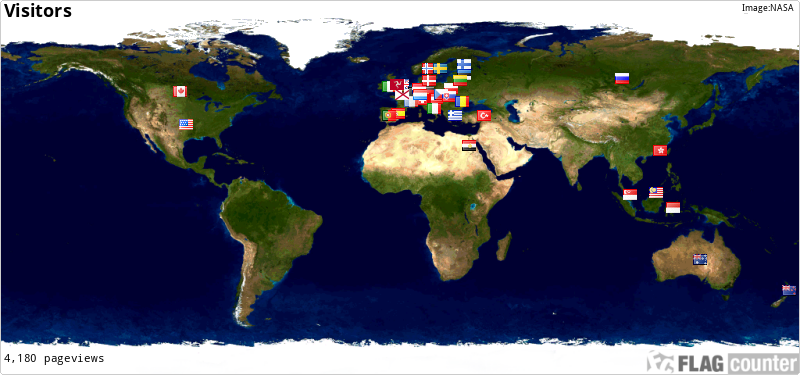

The learning point of this earthcache is to get the geocacher to become familiar with the rock Larvikite. The color mixed rock with large crystals that shines like no other rock, and it origin from Telemark, Norway.
Larvikite is a rare pluton rock species (monzonite) found in the norwegian states of Vestfold and Telemark. These rocks were formed around 290 million years ago in connection with the volcanic activity in what the geologists calls the Oslo field.
Almost 90 percent of the larvikite consists of feldspar, and the crystals are composed in such way that the blue color makes up a blue color mix when the light is broken into the tiny lamellas inside them.
We call this optical phenomenon for the "Schiller effect". This is because of the very special composition of the feldspar in the stone. If we put a larvikite sample under a microscope we can see these lamellas very clearly. The color mix only appears where they are particularly close to each other, while we will not be able to see this if the distance between the lamellas are within a longer distance of each other.
The larvikite also contain small amounts of darker minerals, such as amphibol, olivine and biotite, and the most attractive variants lead to small amounts of the mineral nephelin. In modern geological nomenclature, larvikite classifies as monzonite.
The Larvikite quarries.

Large blocks of larvikite, up to 30 tons, are taken out of the quarries round the areas of Larvik, Norway.
Several types of larvikite are taken out from the quarries. At Tvedalen west of Larvik that is the largest operating area, this is where the light blue larvikite ("Blue Pearl" or "Lundh's blue") is taken out. The dark larvikite (Emerald Pearl "or" Lundh's Emerald ") is to find east of Larvik in Tjølling. There are also two medium-light larvikite types ("Marina Pearl "or" Lundh's Marina "and" Lundh's Ocean "). In the north western part of larvik, at Malerød, a lighter type with larger crystals ("Lundh's Royal") is found. In earlier days, several other types were produced, including red-brown (oxidized larvikite without the color mix) at Tønsberg and at Bolærne, and a greener type out at Nøtterøy.

The way larvikite is made.

Larvikite is a melted rock (magmatic rock), and was made in the depths, about 30 kilometers down. When the melt was cooled down and solidified, large crystals were formed. This occurred in early days, 300-200 million years ago in connection with the breakup of the super continent Pangea, and then the formation of the Oslo Field. The solid rock was raised up to the surface during a various of geological processes. Conditions inside earth and up on the surface are very different, so the crystals that were once formed are no longer stable. There has now been a microscopic change in the feldspar mineral, and this has created the blue color mix that we today can observe in the larvekite.
To log this cache.
To get to log this cache you will have to visit and answer the questions which are related to the coordinates given the earthcache.
When answers are collected, send them to CO for verification.
You can log immediately after answers are sent CO. If there are any questions about your answers CO will contact you.
Logs without answers to CO or with pending questions from CO will be deleted without any further notice.
Please do not include pictures in your log that may answer the questions.
Questions
1. Answer the questions under by visiting the Coordinates.
A. A-1) Nearly 90% of the larvikite consist by what mineral? A-2) What is so different with this mineral in this type of stone? Describe the phenomenon!
B. The mineral in question A) makes up what colors? And what other minerals (name 1) with their colors surround the mineral in A)
C. Larvikite is found in several types and colors. Where is this rock sample from? (Information found under: The Larvikite quarry up in the cache text.) You will have to compare with the color in the stone, and up against what is described in the text. Name of quarry and name of larvikite type.
D.What is the average crystal size in mm of mineral in A)?
2. (It’s voluntary to post a photo in your online log of your visit)
Without revealing any answers!
